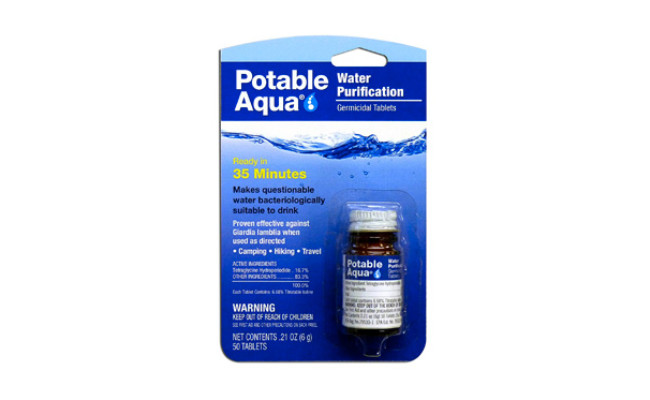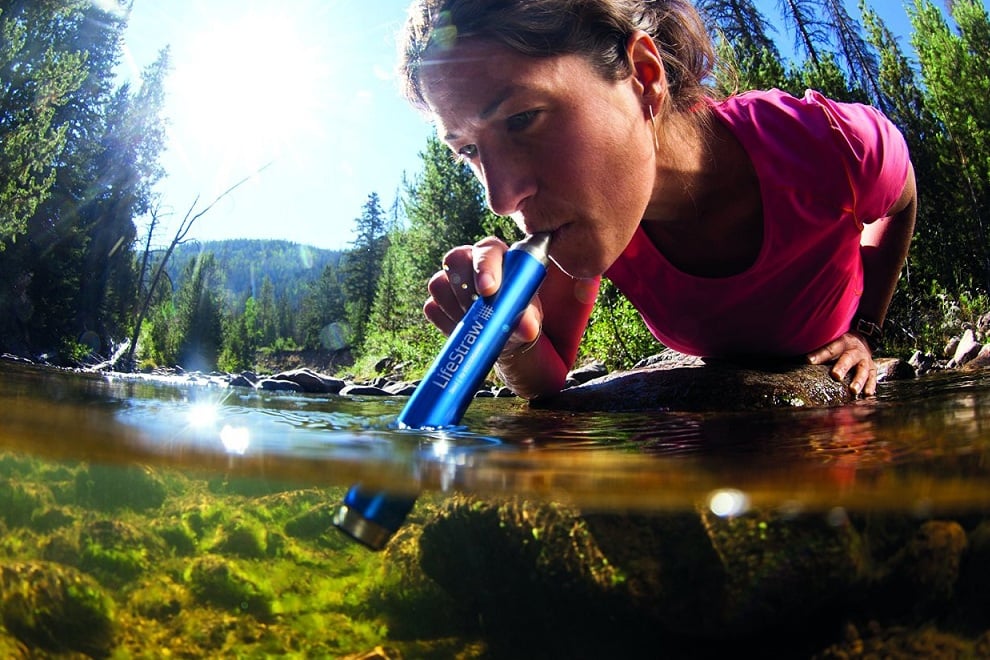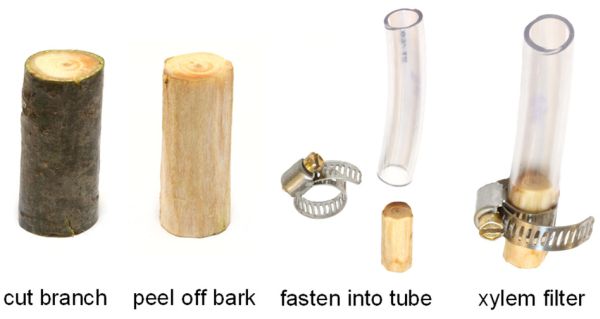14 Ways to Purify Water in a Survival Scenario

How to purify water in survivalism
Of all the things we need to survive, water is one of the only necessities we can only go without for a few days. In our daily life, water is also something extremely accessible, so it often does not receive all the attention it deserves.
However, there are many scenarios in which drinking water is not so easy to obtain.
When it is no longer possible to fetch an unlimited amount of pure water from the sink, you need to know how to purify water from less sterile sources.
If you know how to purify water, you can continue to drink from your tap even after the water purification facilities have ceased operation. You will also be able to purify the water you collect from streams, ponds, rainfall, etc.
Below we'll look at some of the main water purification methods you can use to make sure you always have access to safe drinking water.
Note: The term "purify" is not quite accurate for many of these methods. To purify means to eliminate biological, chemical, mineral and metallic contamination. Whereas filtering only removes biological contamination (up to a certain limit).
Most of the methods below only filter the water, not purify it. You can combine several methods to obtain water as pure as possible, but it remains risky.
If it's about dying of thirst or taking that risk, it's better to take it. Just keep in mind that none of these methods should be considered 100% effective on their own.
1. Boil water
Boiling water to purify it is the oldest method and continues to be the most widely used water purification method in the world. Boiling water is completely effective in killing all living contaminants in just a few minutes. Boiling water does not remove some non-living contaminants such as heavy metals, but it can vaporize many chemicals.
2. Bleach
Adding a small amount of bleach to your drinking water can kill living contaminants without making the water undrinkable. To purify your water using bleach, you should add 8 to 16 drops of bleach per liter of water, depending on how cloudy the water is, and let sit for at least 30 minutes .
Remember that bleach only removes living things. It is also important to keep in mind that bleach only has a shelf life of about six months and will not be effective in purifying water after its expiration date.
3. Sand filtration
With the right supplies, you can create your own sand filter quite easily. Sand filtration does not eliminate microbes, but it cleans dirty and cloudy water and makes it drinkable.
To learn how to make your own sand filter, watch this video:
4. Iodine
Like bleach, iodine can be added to drinking water to kill living contaminants. It takes twice as much iodine as bleach to purify water, and iodine is more expensive to buy.
However, the main benefit of iodine water purification is that the mineral-based iodine has an infinite shelf life. This means that, if you retain enough iodine, you will always be able to purify drinking water.
5. Purification tablets

Tablets designed specifically to purify water are relatively affordable and easy to obtain.
Typically, the main ingredient in these tablets is chlorine dioxide, tetraglycine hydroperiodide, sodium dichloroisocyanurate, although some water purification tablets also contain iodine.
6. Water filters

One of the most effective ways to purify water is to use a high quality water filter.
Water filters come in all sorts of designs, from large filters to sit on your counter, to portable filters you can take with you, and everything in between. Best of all, most of these filters last an incredibly long time before needing to be replaced.
7. Solar distillation
Distilling water allows you to remove many heavier substances like salt and minerals from the water, which means it is a particularly effective method of making salt water safe to drink in an emergency scenario. .
There are many ways to distill water, but you can do it using only the energy of sunlight if you create a solar still.
Keep in mind that solar distillation does not remove many contaminants, such as microbes, so it is best to boil the water after distilling it. To learn how to make your own solar still, watch this video:
9. Filters for water bottles
Water bottle filters are similar to survival straws in that the filtration system is built into the drinking container. Like survival straws, water bottles with built-in filters are a very convenient and portable method of water purification.
There are a large number of filters for water bottles, which vary considerably in price and efficiency. It is therefore important to take the time to study the options available to you.
10. Solar disinfection
Solar disinfection is considered a water purification method of last resort. If you have the option of boiling your water, you should always do so.
However, in a particularly severe survival scenario, where you need water to survive and it is not possible to boil it, you can use solar disinfection to make the water at least a little safer to drink.
To purify water using solar disinfection, simply place the water in a transparent container and expose it to the sun for a day or two. If weather conditions are ideal, the sun's UV rays can remove many contaminants.
11. Activated carbon filters

Activated carbon is an impressive material that is able to filter out a wide range of contaminants.
You can make your own activated carbon water filter, but you can also buy activated carbon pumps designed to fit in a backpack.
These pumps make it easy to filter large amounts of water in a relatively short time.
12. The Stone Boil
If you don't have a fireproof container for boiling water, you can use a method called stone boiling to boil your water without having to place it directly over a heat source.
This method involves heating a stone in a fire, placing it in water, and repeating the process until the water is brought to a boil.
13.UV light
We've already seen how placing water in direct sunlight can kill bacteria with the sun's UV rays. However, using a true UV water purifier is an even more effective way to purify water using UV light.
UV water purifiers are small, handheld devices that can be used to quickly remove most contaminants from a small container of water.
14. Filter by t-shirt
Using your t-shirt to filter water is another method of last resort, as it isn't nearly as effective as the other methods we've covered. However, if you have no other option, running water through your t-shirt can remove a lot of the sediment.
If your water is particularly cloudy, straining the water through your jacket before boiling it or adding chemicals to purify it can clean the water and make it more palatable and safer to drink.
15. Xylem Filter

The xylem filter is a simple yet highly effective design, making it one of the most promising water purification methods for people in third world countries.
To make a xylem filter, all you need is a piece of flexible tubing, a piece of pine or softwood, and some glue. By attaching the piece of wood to the end of the tube with the glue, you can force water through the tube and filter it through the wood, removing up to 99.9% of contaminants.
The only downside to the xylem filter is that it is a very slow way to filter water.
5 comments
-
Maël on
Pour le filtre à Xyleme, la colle est-elle vraiment utile ? Le collier de serrage ne suffit pas ? Je pose cette question parce que je ne trouve pas ça du tout sain de boire de l’eau avec de la colle, vu tous les constituants chimiques qu’elle contient . A moins d’utiliser une colle naturelle..
-
Loby on
Pour le filtre en bois, il faut un tuyau de 2,5 mètres, car il faut cette hauteur d’eau pour avoir une pression suffisante pour que l’eau traverse le bois :)
-
Mahé Hugo on
Très utile pour mon exposé
-
Gwen on
Hello. Juste une petite précision sur la purification de l’eau avec de l’eau de Javel (hypochlorite de sodium):
Le temps d’action de l’hypochlorite de sodium, est d’au moins une demi-heure, mais si la température n’est comprise qu’entre 10 et 18 °C, le temps de contact doit être d’au moins une heure, et davantage si la température est inférieure à 10°C.
😉👍

Merci pour l’info vraiment cela ma aider a faire un filtre pour mon cours de science et juste merci tres bon site.